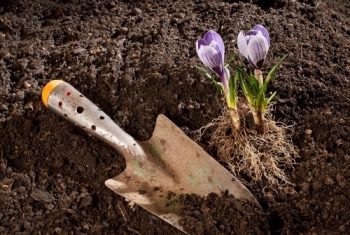How to Save Water in Your Garden

With summer approaching, the threat of hosepipe bans and water restrictions in some areas of the UK will increase, and there is nothing like sanctions on water usage to get the mind focussed on cutting back. Whether you are facing a drought or not, it’s well worth adopting water-saving techniques and applying them to your plants, flowers and garden turf. The average person in the UK gets through around 150 litres of water a day and demand is predicted to reach close to 1,000 litres by 2020. With that in mind, here are some tips to help keep your garden healthy without overdoing it on the H2O.
Watering Plants and Flowers
The plants and flowers in your garden probably do not need watering as much as you think. When looking after our plants we have a tendency to take the ‘little and often’ approach, giving them a sprinkling once or even several times a day. This method, however, does not reach the roots deep into the ground. Instead, give your plants a good soaking once every 8-10 days and dig a hole in the soil to check if it’s moist enough. If it’s not, water some more.
Use a Water Butt
The average roof provides about 24,000 litres of water annually and this can be collected with a water butt and put to good use on lawn turf, plants and for filling garden ponds. Position a butt so that it can collect water from a downpipe.
Use Grey Water
Grey water is the dirty water that we use when washing clothes and taking a bath. While it is not recommended for fruit and vegetables, providing you are not using strong detergent, this water can be saved from the plughole and used to water plants.
Lawn Turf
We all want to keep our turf looking green during the summer and most of us employ a sprinkler to do so. Such a constant method of watering, however, is not great if you need to cut back. The first thing you should know is that buying garden turf direct from reputable suppliers will provide you with a resilient product. Yes, it may go brown and crisp in summer, but it will bounce back and recover in the autumn.
Longer grass survives the dry weather better, so scale back on lawnmower use. When you do need to cut the lawn, set the mower to a high setting so that it takes no more than a third off the length of the grass. Another good tip is to run a long garden cane across the turf every morning to direct the dew down towards the soil.
